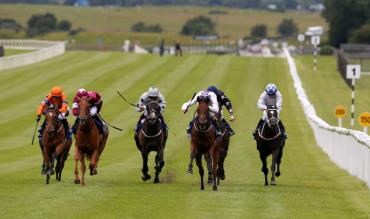Located in the heart Of County Kildare, the racecourse boasts one of the most beautiful backdrops in global horse racing.
The rolling grassland plains of The Curragh are of historical, architectural and ecological importance to the area.
There is written evidence of horse racing dating back to the third century when chariot races were held at the "Cuireach" - the Gaelic word for racecourse, on the current site of the Curragh.
Understandably the Curragh is still the spiritual home of Irish horse racing.
The Curragh Racecourse is owned and managed by the Irish Turf Club, founded in Kildare in the 1760's to encourage the sport of horse racing which it still does to this day.
The Classics
All of the five Irish Classics take place at The Curragh Racecourse.
These are made up of The Irish 2,000 Guineas, The Irish 1,000 Guineas, The Irish Derby, The Irish Oaks and the Irish St Leger. All of them are popular betting heats in the horse racing odds.
Other Big Days At The Curragh
Day two of the Irish Champions Weekend in September also takes place at this venue.
The fixture marks the climax of the Irish Flat racing season and the two day event is shared with Leopardstown.
The Tattersalls Gold Cup (May) is a Group 1 Flat race in Ireland open to thoroughbreds aged four years or older. It is run at the Curragh over a distance of 1 mile, 2 furlongs and 110 yards.
The Pretty Polly Stakes is run on Irish Derby weekend. It is held over a distance of ten furlongs and is open to fillies of three years of age and older and has been a Group 1 race since 2004.
Many runners in the Pretty Polly Stakes have previously contested the 1,000 Guineas at Newmarket and the Curragh and will have run at Royal Ascot and been included in the Royal Ascot betting.
The Course
The Round Course is a right handed, undulating horse shoe with a three furlong home straight. It suits strong gallopers.
The straight course hosts the sprint distances with a dog leg extension that is run over one mile.
There is a slight camber on the stand side rail down to the far side which can lead to stand side being the quicker side in the height of summer.
Curragh Draw Bias
Looking at all races on the Round Course over 1m 2f - 1m 6f in recent years, stalls one and two have performed the best.
In general the lower stalls appear to have a better strike rate in comparison to the wider stalls.
There seems to be no consistent draw bias over the two sprint trips, but occasionally one part of the draw is favoured over the other, normally down to the weather.
Over seven furlongs there is no notable bias whatsoever.
How To Get To The Curragh
-
Car: From Dublin take Exit 9 off the M50 onto the N7 southbound. Take Exit 12 off the M7.
-
Train: Mainline trains from Heuston Station (Dublin), Waterford, Cork, Limerick and Galway to Kildare Town.
-
Bus: The Curragh offer a free shuttle bus from Newbridge and Kildare train Stations for all their annual fixtures.
*Credit for the photos in this article belongs to Alamy*
